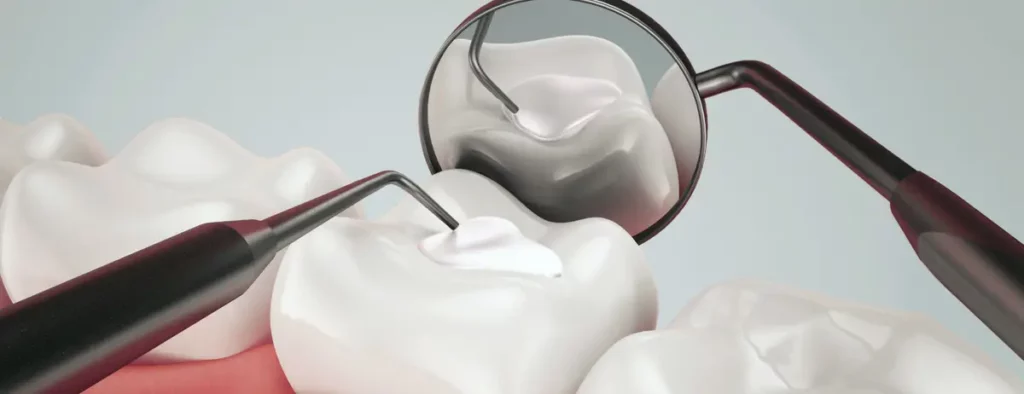
Everything around is undergoing changes, modernization, improvement. Filling materials for dental treatment are no exception. For example, until the middle of the last century, amalgam was a popular material for filling teeth – a metal filling made from a mixture of silver, mercury and other metals. Today, such filling materials have become a rarity even in budgetary clinics, since most specialists use new-generation light-curing composite materials for these purposes.
What is the difference between chemical curing fillings and modern filling materials? Why are they less in demand? Let’s try to figure it out.
A chemical filling is a type of filling material used to fill cavities after caries treatment, restore cracks or chipped teeth. This material differs from others in that it hardens due to a chemical reaction that takes place when two or more components are combined.
Types of chemical seals
There are two main types of chemical curing fillings:
- Composite – seals consisting of several components, characterized by high plasticity. They have a low level of strength after curing, so the service life of such fillings does not exceed 2-3 years. It is very difficult to choose such a filling for teeth in the smile zone: usually it differs by several shades from the color of the enamel of natural teeth.
- Glass ionomer cements are a mixture of synthetic powder (fine glass) and liquid (acid or water). After mixing these components and filling the cavity formed in the tooth with the resulting mixture, the filling becomes solid. The service life of a glass ionomer filling is about 5 years.
Cement-based chemically curing filling materials have a number of undeniable advantages over composite fillings. Among them:
- biological compatibility with tooth tissues;
- slight shrinkage;
- fast installation of the seal due to the absence of etchants and adhesives;
- affordable price.
Despite all the advantages of chemical fillings, when using glass ionomer cements, specialists encountered a number of disadvantages, namely:
- low adhesion of the material to the tissues of the tooth, so such fillings fall out more often;
- insufficient strength characteristics;
- the impossibility of restoring the missing part of the tooth due to the fluid consistency;
- an opaque structure, and therefore they cannot be used for filling the front teeth.
Currently, glass ionomer cements are often used as a lining under modern light-curing composites when filling large cavities. In addition, they are ideal for treating deciduous teeth, filling small cavities on the contact surfaces of permanent teeth, as well as for any temporary fillings.
Chemical fillings are inappropriate to use when:
- the walls of the tooth are thinned;
- a deep cavity formed after the removal of tissues affected by caries;
- the layer of tissues to the pulp of the tooth is minimal.
Due to the natural shrinkage process, such a filling over time can lead to tooth decay, cracks and chips.
Of course, the modern dental industry offers a wide range of new generation composite filling materials that are able to restore both the functionality and the aesthetic appearance of the tooth. Chemical-curing fillings are used less and less, but subject to the installation rules and proper dental care, they remain a budgetary way of dental treatment in the future.
